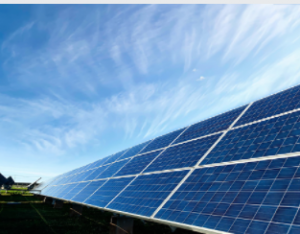Solar power is simply the conversion of solar energy into electrical energy, either directly with photovoltaic cells, indirectly with concentrating solar power, or in a combination. Photovoltaic cells, also known as solar cells, are made from semiconductors such as silicon that absorb light energy and convert it directly into electrical current. Photovoltaic cells can be found both on solar panel roofs and on the ground to take advantage of the natural light that shines from the sun. Solar tracking systems or solar panels use solar tracking to concentrate a larger area of sunlight to a small concentrated beam of solar energy, which is then converted into electrical power.
 Solar electricity can be used in many different ways. Most commonly, it is used to create alternating current (AC) electricity. You will find most homes that have electricity lines that run directly from the main electric utility’s power plant to the various residential solar energy-producing panels. However, even those homes that do not connect to the utility grid still rely on solar energy to operate their lights, appliances, and other electrical items. The same is true for boats and recreational vehicles.
Solar electricity can be used in many different ways. Most commonly, it is used to create alternating current (AC) electricity. You will find most homes that have electricity lines that run directly from the main electric utility’s power plant to the various residential solar energy-producing panels. However, even those homes that do not connect to the utility grid still rely on solar energy to operate their lights, appliances, and other electrical items. The same is true for boats and recreational vehicles.
Another way solar power stations from Mannix convert solar energy is by use of heat exchangers. A thermal energy system takes heating oil or other fuel and places it in a tank of water. The flowing temperature of the water then transfers to the heating oil or fuel, which in turn heats the water slightly, making it available for use by the home’s electrical equipment and appliances.
In some parts of the world, including California, the use of this form of renewable energy is widespread. Some people there have successfully harvested a large amount of solar energy by building solar farms. When sunlight falls on the concentrated solar heat collected by the farm’s arrays, it is used to heat the water needed to produce electricity. The excess heat is then routed to the home. Although a solar farm can be expensive to establish, the money saved by harnessing renewable energy makes the investment more than worth it. During peak demand times, many of these farms can produce more electricity than they actually do.
The sun’s ultraviolet (UV) radiation is another source of renewable energy. The U.S. Department of Energy’s Pacific regional centres for energy assessment estimates that the sun could supply the energy requirements of the United States for a year. While this incredible energy source seems to be unlimited, most solar-powered systems only operate in regions that receive an average of about 6 hours of continuous sunshine. The amount of heat collected from the sun and converted into usable electricity will vary depending on how much solar radiation is actually absorbed.
The conversion of sunlight to electrical energy occurs in the solar cells placed on the roof, side of a building or other areas to trap the light and convert it to solar energy. In making the most out of solar energy, photovoltaic panels must be positioned in areas that receive plenty of direct sunlight. Also, photovoltaic cells must be located in such a way as to maximize the absorption of solar radiation. Although the sun does not shine during daylight hours, it does illuminate the Earth at night, which is when photovoltaic energy is most useful.
Solar heating systems are another source of solar energy. It uses the same type of solar panels that use the sun’s ultraviolet radiation to convert sunlight into thermal energy. Thermal solar panels heat water and air by conduction and absorption. It is a free energy method, which means that no upfront costs exist, and the equipment is completely maintenance-free. Solar heating systems are also typically found on rural farms, benefiting from not being impacted by the rising cost of electricity.
The technology that makes solar Adelaide cells efficient and reliable is called semiconductor-based solar cells. These types of solar cells harness the power of electrons instead of photons, which are electromagnetic energy waves created by an electric source. When sunlight strikes a semiconductor cell, electrons are knocked loose. The flow of these electrons is then diverted to create energy, which can be used to heat air, warm water or even produce electricity.


